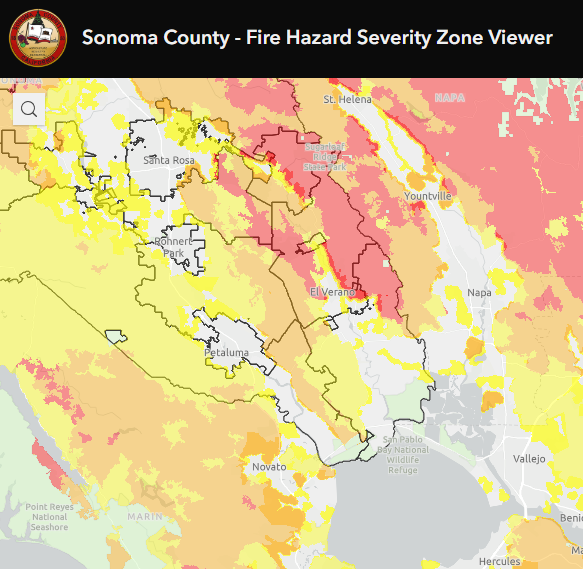Fire Hazard Severity Zones (FHSZ) - Sonoma Valley Fire District
Sonoma County Fire Hazard Severity Zone Map
The recent updates to Fire Hazard Severity Zones (FHSZ) in California provide a more accurate assessment of wildfire risks based on modern climate data and fire modeling. These updates affect both State Responsibility Areas (SRA) and Local Responsibility Areas (LRA), influencing fire prevention measures, building codes, and real estate disclosures. Adoption of these new maps is required by Legislative Assembly Bill 211 (AB211)
Sonoma County - FHSZ Viewer (Map)
State SRA with LRA Map Viewer (Map)

Key Takeaways:
- FHSZ Classification: Properties are categorized as Moderate, High, or Very High Fire Hazard Severity Zones based on terrain, vegetation, fire history, and climate conditions.
- Fire Hazard vs. Risk: The maps indicate hazard potential, not immediate risk, and do not account for mitigation efforts like defensible space or fire-resistant construction.
-
Impact on Property Owners:
- Homeowners in Very High FHSZ must comply with stringent defensible space and home hardening requirements.
- 100-foot defensible space clearance is mandatory around structures in these zones.
- New construction and renovations in designated zones must adhere to Wildland-Urban Interface (WUI) building codes.
- Property sellers must disclose FHSZ designations during real estate transactions.
Legislative Updates:
- Senate Bill 63 (2021) now requires FHSZ classifications to include Moderate and High zones in addition to Very High, expanding fire hazard oversight.
- Assembly Bill 337 (1992) originally mandated the identification of Very High Fire Hazard Severity Zones following devastating wildfires.
- Assembly Bill 211 (2022) requires local agencies to adopt Moderate, High, and Very High FHSZ designations within 120 days of state recommendations. However, local governments cannot downgrade hazard levels identified by the state but may increase them if justified.
Mapping & Compliance:
- The State Fire Marshal is responsible for updating FHSZ maps, which are used to enforce fire safety standards across the state.
- Residents can check their property's FHSZ status online at osfm.fire.ca.gov/FHSZ.
- Local jurisdictions are required to review and adopt the updated maps, ensuring communities are better prepared for wildfire threats.
For more information on how these changes impact Sonoma Valley residents, visit:
and check out the California Fire Hazard Severity Zone resources below.
RESOURCES
FACT SHEET (online viewer)
LRA-Legislation-Factsheet---Flipbook-combined.pdfMessage from the California Department of Insurance


